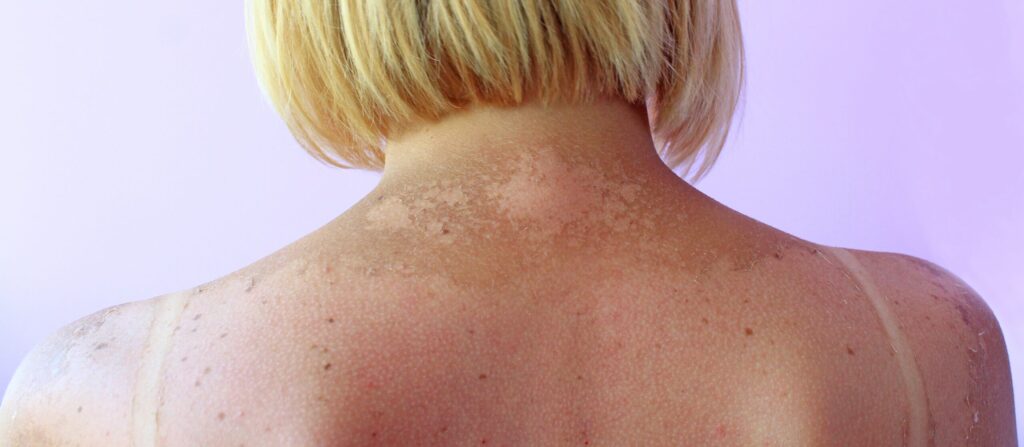Introduction
The warmth of the sun on our skin can be comforting, but prolonged exposure to its rays can lead to significant damage. “Sun damage isn’t just about a sunburn,” says Dr. Adam Mamelak, board certified Dermatologist. “It encompasses a range of effects that can have lasting impacts on our skin’s health and appearance.” In this article, we’ll delve into what sun damage entails, the visible changes it causes on the skin, and the importance of prevention.
What is Sun Damage?
Sun damage, also known as photodamage, occurs when the skin is overexposed to ultraviolet (UV) radiation from the sun. This exposure can lead to various adverse effects on the skin’s structure and appearance, both short-term and long-term.
Visible Changes on the Skin
Photoaging:
Photoaging refers to premature aging of the skin caused by exposure to UV radiation. It leads to the formation of fine lines, wrinkles, and a loss of skin elasticity. Unlike chronological aging, which occurs naturally over time, photoaging accelerates the aging process, making the skin appear older than it is.
Age Spots/Liver Spots/Lentigos:
These are dark spots that develop on the skin, particularly in areas exposed to the sun, such as the face, hands, and shoulders. They are also known as solar lentigines and result from the overproduction of melanin triggered by UV exposure.
Poikiloderma:
Poikiloderma manifests as reddish-brown discoloration, usually seen on the neck, chest, and upper back. It’s a combination of hyperpigmentation, telangiectasia (dilated blood vessels), and skin atrophy, commonly associated with chronic sun exposure.
Solar Elastosis:
Solar elastosis is the degeneration of elastin fibers in the skin due to prolonged sun exposure. It results in the skin becoming thickened, leathery, and less elastic, contributing to the formation of wrinkles and sagging.
Favre–Racouchot Syndrome:
This syndrome is characterized by the development of multiple open comedones (blackheads) and cysts, often on the cheeks and temples. It’s associated with long-term sun exposure, particularly in individuals with fair skin.
Actinic Keratosis:
Actinic keratosis presents as rough, scaly patches on the skin, typically found on areas exposed to the sun, such as the face, scalp, and hands. While often benign, they can progress to squamous cell carcinoma if left untreated.
Skin Cancer:
Perhaps the most serious consequence of sun damage is the increased risk of developing skin cancer. UV radiation damages the DNA in skin cells, leading to mutations that can result in basal cell carcinoma, squamous cell carcinoma, or melanoma.
Prevention
Preventing sun damage is crucial for maintaining healthy, youthful-looking skin and reducing the risk of skin cancer. Here are some effective strategies:
- Apply Sunscreen: Use a broad-spectrum sunscreen with SPF 30 or higher daily, even on cloudy days. Reapply every two hours, or more frequently if swimming or sweating.
- Seek Shade: Limit your time in direct sunlight, especially during peak UV hours (10 a.m. to 4 p.m.). Seek shade under trees, umbrellas, or wear protective clothing.
- Wear Protective Clothing: Cover up with tightly woven clothing, wide-brimmed hats, and UV-blocking sunglasses to shield your skin and eyes from UV rays.
- Avoid Tanning Beds: Tanning beds emit harmful UV radiation and increase the risk of skin cancer and premature aging. Opt for self-tanning products or spray tans instead.
- Check Your Skin: Perform regular self-examinations of your skin to detect any changes or suspicious moles early. Consult a dermatologist if you notice any abnormalities.
Conclusion
Sun damage can have far-reaching effects on the health and appearance of our skin, from premature aging to an increased risk of skin cancer. By understanding the visible changes associated with sun damage and adopting preventive measures, such as wearing sunscreen and seeking shade, we can protect our skin and enjoy the sun safely. Remember, taking care of your skin today will pay off in the long run, keeping it healthy and youthful for years to come.

